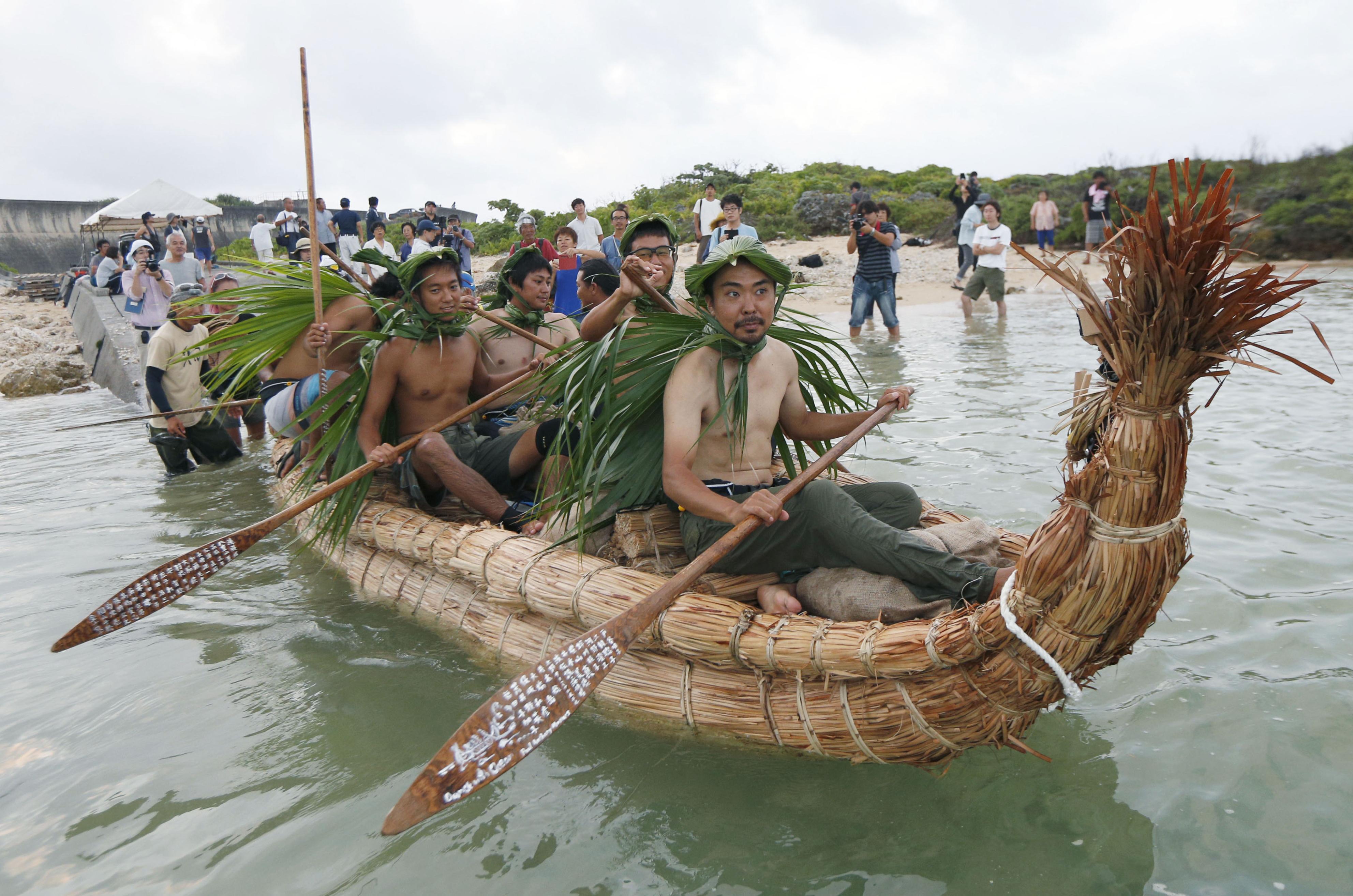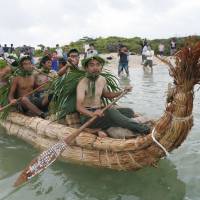A team of researchers who set off in reed canoes in a bid to replicate the journey Stone Age travelers may have taken to reach the Japanese archipelago needed help to finish the voyage after encountering rough seas.
The two crews of seven set off from Yonaguni Island in Okinawa Prefecture on Sunday and reached their destination of Iriomote Island, another island in the prefecture, about 75 kilometers to the east, at 11 a.m. on Monday.
However, a strong swell forced the suspension of the voyage on Sunday night, and an escort ship towed the two reed canoes for a short time before the 14 seafarers resumed their voyage Monday morning.
"Unfortunately, we were unable to reach Iriomote Island just by ourselves, but it was meaningful," said Yosuke Kaifu, the leader of the project who also heads the Division of Human Evolution at the National Museum of Nature and Science, one of the organizations involved in the effort.
"We will rethink how we can do it and make it work next time."
Designed to replicate the journey Japan's earliest settlers may have taken to migrate to Okinawa from Taiwan, then part of the Eurasian continent, the two vessels took 28 hours to complete their journey.
The 6-meter-long vessels were made from raupo, a type of bulrush that grows naturally on Yonaguni.
Researchers hypothesize that ancient settlers may have traveled to what is now Japan from present-day Taiwan through the Nansei Islands, where many relics dating back more than 30,000 years have been discovered.




